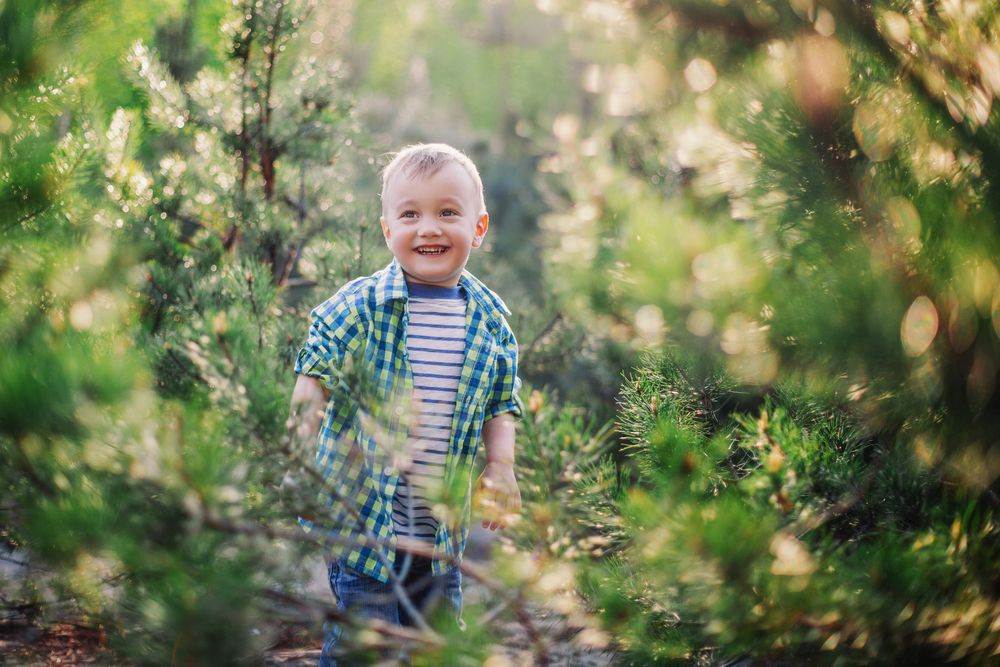Forest kids and the move towards outdoor learning
Published on Wednesday, 09 October 2019
Last updated on Tuesday, 31 December 2019

Peppa Pig may be the most famous of the muddy puddle jumpers, however, she's not the only little person getting her gumboots dirty. Around the world, children are immersing themselves in nature play and benefitting from an outdoor learning approach.
The rise of forest schools and bush kindies has brought many benefits for youngsters, and here in NZ, there are at least 40 outdoor early childhood education programmes that encourage children to learn, grow and play in nature.
Many educators and families are embracing forest learning and, this year, thousands of Kiwis signed a petition calling for the government to allow full-time nature-based early childhood education. So, let's explore this wild approach to learning.
Where does forest learning occur?
Forest learning has been around in Northern Europe for more than 50 years and it's based on the Scandinavian idea of 'friluftsliv', or 'open-air living'.
This means that at forest schools and bush kindies, children are taken to an 'outdoor classroom', like a park, reserve, beach-land, creek-bed or bush area and encouraged to learn from, and through nature. They explore, discover and play in all kinds of weather (wearing weather-appropriate clothing) and are offered fun, stimulating and hands-on experiences outside the fenced early learning environment.
Full-time forest kindies (like those operating in Denmark and proposed in New Zealand) are run entirely outside. However, there are also forest learning sessions that give children an outdoorsy experience for a few hours a week (like Nature School NZ’s Bush Sprouts programme).
Some forest learning happens in sprawling rural settings, complete with eels, firepits and rope swings, however, sessions can also be run in urban areas. For instance, Roskill South Kindergarten runs their bush kindy programme in a native tree reserve behind the service.
There are many countries around the world that have embraced forest learning, a sizeable 10 per cent of preschools in Denmark are forest kindergartens, and forest schools moved into the UK in the early 1990s. Germany calls its forest nurseries 'Waldkindergarten', and in the last decade, outdoor preschools have sprouted in places like the US, Canada, Japan and Australia.
What activities can forest kids engage in?
Forest school and bush kindy activities are usually child-led and play-based, with children using all five senses (sight, sound, touch, taste and smell) to discover, experience and learn.
According to Leo Smith, the creator of Plimmerton Kindergarten's Bush Sprouts programme, each child is, 'Free to do what works for them' and individuals, 'Learn how they learn best' by playing, exploring and challenging themselves.
Forest learning experiences can emerge spontaneously as children discover interesting things and – depending on the weather, the environment and the children – activities may include:
- Tree climbing and rope climbing
- Sensory walks
- Foraging
- Shelter-building
- Fire building, fire-lighting and campfire cooking
- Woodwork and using hand tools
- Nature art
- Games, like hide and seek
- Role-play and imaginary play
What are some key benefits of forest learning?
The good news is that all children can benefit from an outdoor approach to learning – from the very young, to school kids, to those with disabilities.
Forest learning helps children to:
- Be physically active and hone their fine and gross motor skills
- Develop independence, resilience, confidence and self-esteem
- Learn about nature and gain a sense of 'environmental stewardship'
- Develop creativity and spark their curiosity
- Learn practical outdoor skills
- Work out how to solve problems
- Manage a healthy level of risk, challenge themselves and overcome fears
- Learn how to communicate, negotiate and collaborate with others
- Direct their own learning and make their own fun
Postdoctoral researcher Matt Stevenson has also found that children's attention spans are 'reset' by being in nature, and the founder of Teal Valley Forest Kindergarten, Sharron Goodman-Page agrees.
She says her forest kids exhibit, 'The relaxed, focused play you strive for. Ongoing access [to forest programmes] builds a sense of belonging and wellbeing; everything you read backs up how beneficial that green space is.'
Forest learning provides a chance for children to run free, develop as a person and jump in as many muddy puddles as they please!
Related Articles

The Amazing Benefits of Sensory Play
Sensory play facilitates discovery and learning by encouraging children to use scientific processes while they play, create, investigate and explore.

Kids need freedom from play restrictions to develop
The importance of providing opportunities for unstructured play for children in care.

Prop boxes - Tools for extending dramatic play
Dramatic play offers children the potential to experiment, develop knowledge, experiment, and interact with their environment and the world more broadly.
